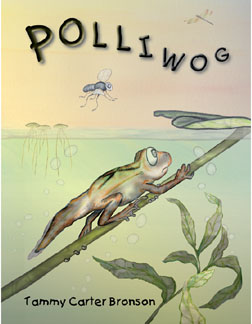Tammy Carter Bronson, author and illustrator of Tiny Snail, and Matthew Bronson, author of The Kaleidonotes, gave an excellent talk about publishing and the heroic journey to our middle and elementary classes. We use the heroic journey as a story arc a lot, but it was great for the students to hear published authors talking about how important it was to them.
The Bronsons have done over 500 talks to schools (but this was their first to in a Montessori program) so they have a well polished presentation. I particularly liked how they stressed the need for revision when writing. Tiny Snail took nine months to write, and 16 revisions before Ms. Bronson was happy enough with it to start illustrating. And it’s a kids picture book. They talked about peer reading and read-out-loud revision strategies. In our after-talk discussion, while we assembled a couple graphic organizers on the heroic journey and publishing, it was great to see the students recognize, however reluctantly, that there might actually have been a good reason for them practicing these techniques all year.
It was also very interesting to hear that the authors are delving into the growing opportunities of the web for building a following and publishing their work. You can find Ms. Bronson reading Tiny Snail and Pollywog on their YouTube channel. While it’s not up yet, I’m really looking forward to seeing the making of her new book, where she is video recording the entire process.
This was a great opportunity for our students, especially the prospective writers and directors, and I will try to plan something like this every couple years. I also feel a little guilty. The Bronsons emphasize how important it is to put your best work forward. Even though it’s easy to self-publish or publish online what you put up will shape your reputation. That’s why multiple revisions are important. Yet despite my best efforts, I don’t have the time to revise each blog post until I’m completely happy with it. Blogging is a different beast. So I beg the reader’s lenience (of course, since the average number of readers per blog is one, this may not even be a problem).

